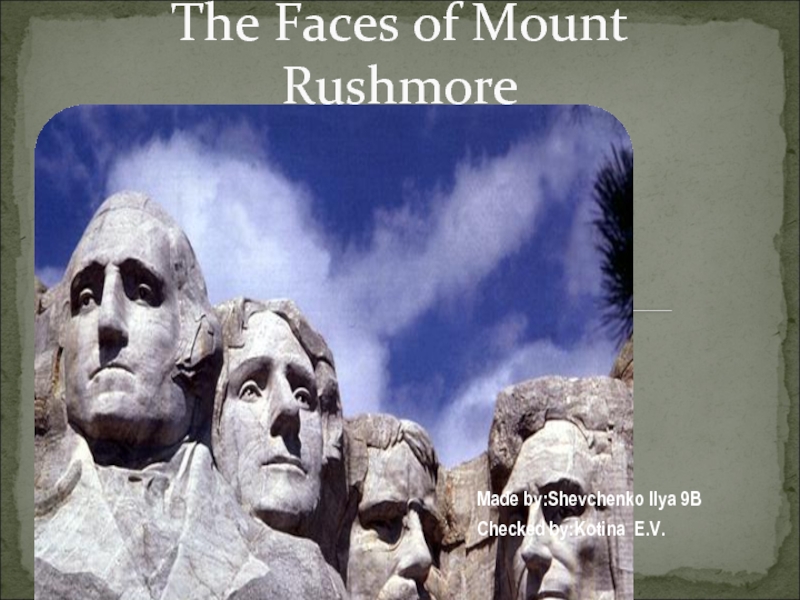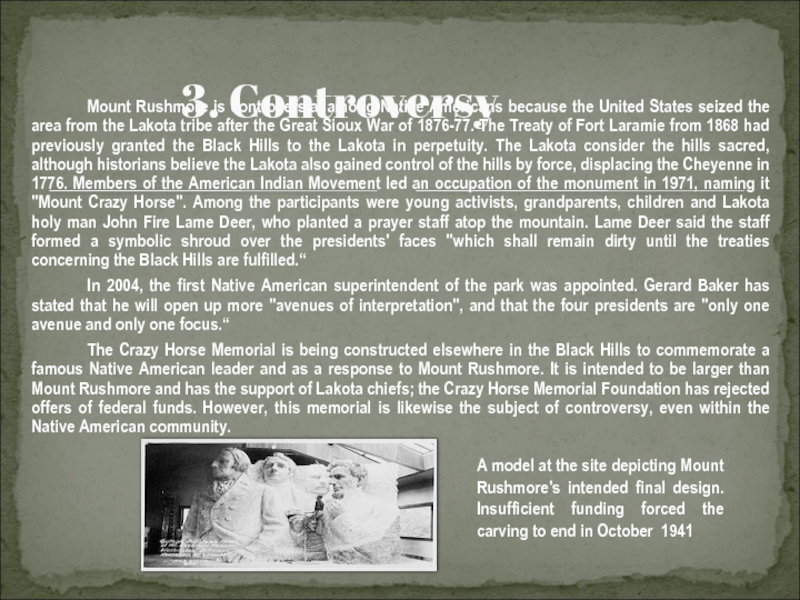those of the rest of the Black Hills region of
South Dakota. Birds including the turkey vulture, bald eagle, hawk, and meadowlark fly around Mount Rushmore, occasionally making nesting spots in the ledges of the mountain. Smaller birds, including songbirds, nuthatches, and woodpeckers, inhabit the surrounding pine forests. Terrestrial mammals include the mouse, chipmunk, squirrel, skunk, porcupine, raccoon, beaver, badger, coyote, bighorn sheep, and bobcat. In addition, several species of frogs and snakes inhabit the region. The two brooks in the memorial, the Grizzly Bear and Starling Basin brooks, support fish such as the longnose dace and the brook trout. Some endemic animals are not indigenous to the area; the mountain goats are descended from goats which were a gift from Canada to Custer State Park in 1924 but later escaped.
At lower elevations, coniferous trees, mainly the Ponderosa pine, surround most of the monument, providing shade from the sun. Other trees include the bur oak, the Black Hills spruce, and the cottonwood. Nine species of shrubs live near Mount Rushmore. There is also a wide variety of wildflowers, including especially the snapdragon, sunflower, and violet. Towards higher elevations, plant life becomes sparser. However, only approximately five percent of the plant species found in the Black Hills are indigenous to the region.
Though the area receives about 18 inches (460 mm) of precipitation on average per year, alone it is not enough to support the abundant animal and plant life. Trees and other plants help to control surface runoff. Dikes, seeps, and springs help to dam up water that is flowing downhill, providing watering spots for animals. In addition, stones like sandstone and limestone help to hold groundwater, creating aquifers.
4. Ecology






























